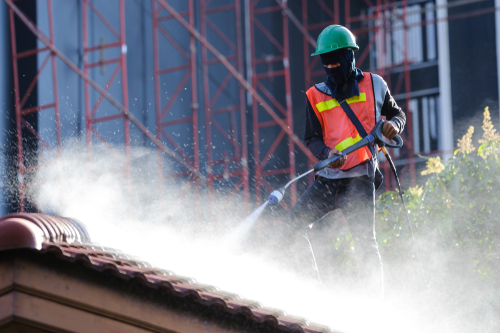
All you need to know about chemical roof cleaning
26th January 2023
If you’ve been too busy to keep a close eye on your roof, don’t be shocked to find it clogged with all sorts of debris that should never have been there in the first place. You’ll know your roof needs a thorough clean when piles of leaves, twigs and other organic material block the gutters and pool rainwater on the surface.
Other telltale signs include moss or algae growth, streaks caused by blue-green algae, or when the overall look of your roof has developed an unattractive dullness.
Neglecting your roof and the organic debris that builds up in your gutters can have serious repercussions. Standing water on the rooftop can lead to structural damage, such as warping or rotting of the materials it is constructed from. It leaves your property vulnerable to extreme weather conditions like storms or high temperatures.
Particularly wet climates are also more prone to moss growth, accelerating wear and tear on roofs if not addressed promptly. Algae streaks often appear but should be treated before they can seep into shingle material or wooden parts of a structure’s outer shell.
An immaculate, stain-free roof will keep your home looking beautiful from the curb. However, stains can build up if left unchecked; making your house looks aged and faded.
Their guide provides all the information you need to remove any existing or potential future stains from your roof. Taking proactive steps like hiring Wirral roof cleaners to keep your roof clean will ensure long-term protection for years ahead.
What is Chemical Roof Cleaning?
Professional roof cleaners can help you eliminate the unsightly signs of moss, algae, and lichens that have found their way onto your shingles and the mold growth that has invaded your siding. Rather than opting for a costly roof replacement, cleaning your roof with chemical solutions is often a more viable option. These chemically formulated solutions are designed to be sprayed on your roof at a pressure not exceeding 100 psi to kill any organic material that is growing on it.
Chemical roof cleaning is far superior to mechanical cleaning methods such as power washing and brushing, which use high levels of pressure and are likely to damage the granular surface of the shingles- thus potentially voiding the manufacturer’s warranty. The most common chemicals used for this job involve a low concentration of chlorine bleach combined with additives like TSP, an enhancer, alcohol, and surfactants.
Homeowners should be aware that certified professionals take extra measures to ensure the safety of their vegetation during the process. This may include watering plants before, during, and after spraying to ensure nothing but what grows on the roof is eliminated from your property. Furthermore, getting your roof cleaned by certified experts will only cost you a fraction of what you would pay to replace it – typically averaging around a few hundred dollars.
Before you make such an important decision regarding your home’s appearance and longevity, however, it’s best to do some research into different professional services to find an experienced technician who can get rid of all forms of growth without damaging or voiding any warranties associated with your home’s features, with the right combination of affordable pricing and satisfactory results, chemical roof cleaning could turn out being one of the best investments you make in regards to maintaining both form and function in your home!
What Are Chemical Treatments Used for Roof Cleaning?
Say goodbye to dull and outdated asphalt shingles – modern laminated shingle technology has revolutionised the roofing market. Manufacturers have created an improved roof covering that looks incredibly durable by combining fibreglass, limestone, specialised paper, and chemical cleaning solutions.
Not only does it give your home a facelift with its attractive look, but you can also count on this long-lasting material for years of reliable protection from the elements. With these remarkable benefits combined in one product, there’s no better way to upgrade your roof.
Don’t settle for anything less than the best when it comes to your rooftop needs. Upgrade and enjoy the advanced protection, enhanced durability and superior performance that laminated shingle technology has to offer. Enjoy greater peace of mind knowing that you are investing in a superior roofing solution.
Different Chemical Roof Cleaning Methods?
Over the past three decades, roof shingles have gone through a revolution – no longer are they only made up of asphalt but also contain components like fiberglass, limestone and specialized paper. This combination has created laminated shingles that can be kept looking as good as new for years to come with chemical cleaning solutions.
Sodium Hydroxide
Using roof cleaning solutions containing sodium hydroxide, also known as caustic soda or lye, is a common practice. However, it is important to be mindful of these products’ concentration and timing of use.
When used in high concentrations on roofs for extended periods, this highly alkaline cleaning product can break down asphalt and its petroleum-based components, weakening the bond between shingles and their granular surface, which may eventually lead to dissolution. Taking proper precautions when using these solutions will help ensure your roof remains intact over time.
Despite its strength, sodium hydroxide can be effectively used over a short period with the appropriate dilution and rinsing techniques. If regulated properly, this substance can eliminate dirt, algae and mould without leaving any residual activity on the roof’s surface.
It is important to remember that even after the chemical has dried up, rainwater can still cause it to deteriorate petroleum-based components of shingles. For concrete, tile or slate roofs, professionals often recommend using sodium hydroxide as a cleaning solution.
Nonetheless, proper safety precautions must be taken when handling this powerful substance to ensure the well-being of everyone involved. Additionally, thorough rinsing afterwards is essential to completely remove all traces of sodium hydroxide from the roof’s surface.
Sodium Hypochlorite
For effective roof cleaning, sodium hypochlorite is a common chemical solution used by professional cleaners. After the water has completely evaporated, it is transformed into salt.
However, it is important to take note of the right dilution rate when applying this product, as improper usage can result in shingle deterioration and destruction of the surrounding vegetation.
If you spot a 12% sodium hypochlorite bottle containing small amounts of sodium hydroxide at your local hardware store, don’t be alarmed because this combination is often used for successful cleaning outcomes. Moreover, if flora near the property may come into contact with these hazardous chemicals during use, professional cleaners should rinse them off before and after application.
Sodium Percarbonate
Soft washing is a gentler alternative to traditional high-pressure washers, using fewer gallons per minute (GPM) instead of higher pressure. This process relies on either sodium hydroxide or sodium hypochlorite solutions which are applied to the surface and then rinsed off with water or left to naturally dry away.
The method is an excellent way of cleaning your roof safely without putting its structural integrity at risk, enabling you to keep it in good condition for longer. Allowing natural moisture, such as rain, to remove the solution can also be effective for those wishing not to use water. In any case, soft washing provides an effective yet non-damaging way of keeping your roof clean.
It requires sodium percarbonate. This oxygen-based chemical solution does not need to be rinsed off due to its unique ability to become inactive when it comes into contact with water. It is a great eco-friendly product for cleaning asphalt shingle and wood shake roofs because it has natural properties, making it one of the best options available.
To ensure optimal results, you must mix and apply this solution according to specific directions provided by roof cleaning contractors specialising in soft washing. With proper application, you can be sure your roof will be clean and protected without compromising the environment.
Benefits of Chemical Roof Cleaning
People often forget about roof cleaning when it comes to home maintenance, but this is a costly mistake. Roofs protect our homes from the elements and need regular care to stay strong and look good for years to come.
Experts recommend chemical roof cleaning processes since they do not require high pressure while still providing long-lasting cleanliness that enhances curb appeal – all without causing damage or furthering mold growth on your roof’s surface material.
Chemical roof cleaning kills off any mold, mildew, or algae and does not deepen the pores of your roofing material as high-pressure washes do. This means that chemical roof cleaning is a better choice for ensuring the longevity of your roof’s protective qualities against the elements, such as sun, wind, snow, and hail.
Conclusion
Cleaning your roof can be daunting, but having the right knowledge and tools makes it much easier. Knowing the best products and proper usage techniques for each type of roofing material can make all the difference in preserving its quality over time.
No matter which option you choose, always be sure to follow safety precautions to ensure a successful cleaning every time. From sodium hydroxide to sodium percarbonate, understanding the strengths and limitations of these powerful solutions will help you get the job done properly without risking damage to your property or the environment. With careful consideration and professional guidance, keeping your roof clean has never been simpler.


